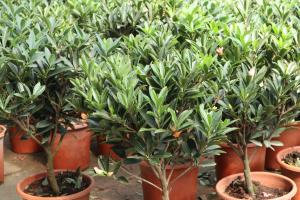Why Planting Trees is Not Always Good
The Introduction
Planting trees is often touted as the ultimate solution to various environmental problems such as global warming, soil erosion, and air pollution. Trees are undoubtedly beneficial to the environment and the human race. However, planting trees may not always be a good solution, as it can have negative effects on both the environment and societies.
The Negative Effects of Tree Planting
Although planting trees does provide environmental benefits such as reducing carbon dioxide in the atmosphere, it can sometimes lead to negative outcomes. For instance, afforestation (planting trees in areas where they did not previously exist) can adversely affect the biodiversity of an ecosystem. Monoculture plantations, where a single species is planted over vast areas, can further disrupt natural habitats and ecosystems. Additionally, planting trees in certain areas, such as the edges of urban spaces, may increase the risk of wildfires.
Tree Planting and Socio-economic Impact
Planting trees also has social and economic implications. While trees can provide environmental benefits, they may negatively impact the livelihoods of local communities. In developing countries, they may result in the loss of agricultural and grazing land, leading to food insecurity and impoverishment. Additionally, planting trees in certain areas may lead to an increase in the cost of living, as the demand for water and energy increases.
The Need for Sustainable Tree Plantation
Given the inevitable negative effects of tree planting, it is essential to implement sustainable tree plantation practices. Sustainable plantation involves planting trees that are suitable for the local ecosystem and that do not disrupt the biodiversity of the ecosystem. It also means involving local communities in the plantation process and educating them on sustainable land use practices. Furthermore, sustainable plantation practices should focus on agroforestry, where trees are grown with crops, creating a harmonious relationship that leads to both environmental and economic benefits.
Conclusion
Planting trees is undoubtedly crucial for environmental and social welfare. However, planting trees without considering the potential negative outcomes can lead to disastrous effects. Sustainable tree plantation practices are the solution to the negative effects of tree planting. In implementing these practices, communities can reap the benefits of trees without unnecessarily affecting their livelihoods and without damaging the environment.

 how many times do yo...
how many times do yo... how many planted tre...
how many planted tre... how many pine trees ...
how many pine trees ... how many pecan trees...
how many pecan trees... how many plants comp...
how many plants comp... how many plants can ...
how many plants can ... how many plants and ...
how many plants and ... how many pepper plan...
how many pepper plan...





























